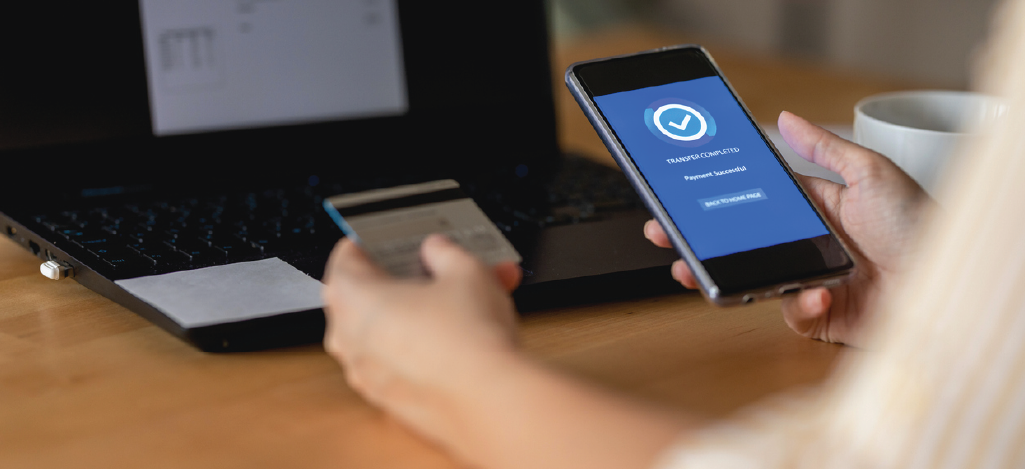Learn how to streamline payment processes in the healthcare industry with our comprehensive guide to implementing online payment portals.
In today's digital age, online payment portals have become an essential component of healthcare organizations' financial systems. Implementing an effective online payment portal can streamline payment processes, improve patient satisfaction, and optimize revenue cycles. This guide will provide an in-depth understanding of online payment portals, explore the key features of an effective portal, outline the steps to implementation, and offer solutions to overcome challenges that arise along the way.
Understanding Online Payment Portals

The Basics of Online Payment Portals
Online payment portals are secure, web-based platforms that allow patients to conveniently pay their healthcare bills electronically, usually through credit or debit cards or electronic fund transfers. These portals act as a virtual gateway between patients and healthcare providers, facilitating secure and efficient financial transactions.
But what exactly happens when a patient uses an online payment portal? When a patient receives a healthcare bill, they can simply log into the online payment portal using their unique credentials. Once logged in, they are greeted with a user-friendly interface that displays their billing statements and payment options. This easy accessibility eliminates the inconvenience of traditional paper-based billing methods, where patients would have to physically mail their payments or visit the healthcare provider's office.
Not only do online payment portals offer convenience, but they also provide patients with greater control over their healthcare finances. Patients can review their payment history, track their expenses, and manage their accounts at any time. This level of transparency empowers patients to stay on top of their financial obligations and make informed decisions about their healthcare expenses.
Benefits of Implementing Online Payment Portals in Healthcare
Implementing online payment portals in healthcare settings offers numerous benefits for both patients and healthcare providers. Firstly, these portals improve payment collection rates by reducing late or missed payments. With automated payment reminders and easy access to payment options, patients are more likely to settle their bills promptly.
Moreover, online payment portals significantly reduce administrative costs associated with manual payment processing. With the automation of billing and payment functions, healthcare staff can dedicate their time and efforts to providing quality patient care rather than processing payments. This not only streamlines the payment process but also improves overall operational efficiency within healthcare organizations.
In addition, online payment portals enhance patient satisfaction by offering a convenient and seamless payment experience. Patients can securely access their billing information, request payment plans, and view their invoices, all within a user-friendly interface. This level of transparency and accessibility fosters patient trust and loyalty, ultimately improving the overall patient experience.
Furthermore, online payment portals also contribute to the security of financial transactions in healthcare. These portals employ advanced encryption and security measures to protect sensitive patient information and financial data. Patients can have peace of mind knowing that their personal and financial details are safeguarded during the payment process.
Lastly, the implementation of online payment portals aligns with the growing trend towards digital transformation in the healthcare industry. As technology continues to advance, patients expect convenient and digital solutions for their healthcare needs. Online payment portals not only meet these expectations but also position healthcare organizations as innovative and patient-centric.
In conclusion, online payment portals are revolutionizing the way patients pay their healthcare bills. With their convenience, transparency, and security, these portals offer a win-win solution for both patients and healthcare providers. By embracing this technology, healthcare organizations can streamline their financial operations, enhance patient satisfaction, and improve overall revenue cycles.
Key Features of an Effective Online Payment Portal
Implementing an online payment portal requires careful consideration of various factors to ensure its effectiveness. In addition to the basic features, there are several key aspects that should be taken into account to enhance the functionality and user experience of the portal.
Security Measures for Online Payment Portals
When it comes to handling sensitive patient financial information, security should be a top priority. Robust security measures need to be implemented to protect against potential data breaches and ensure patient privacy. In addition to the standard security measures such as data encryption and firewall protection, regular system audits should be conducted to identify and address any vulnerabilities. Compliance with industry-standard regulations, such as HIPAA, is essential to maintain the confidentiality and integrity of patient data.
Furthermore, it is important to educate patients about the security measures in place to build trust and confidence in the online payment portal. Providing clear and concise information about the security protocols and certifications can help alleviate any security concerns patients may have.
User-Friendly Interface and Navigation
An effective online payment portal should have a user-friendly interface and intuitive navigation that simplifies the payment process for patients. The design should be clean and appealing, with clear instructions and prominent call-to-action buttons guiding users through the payment process.
Additionally, providing easily accessible support options, such as live chat or a dedicated helpline, can further enhance the user experience. This allows patients to seek assistance or resolve any issues they may encounter during the payment process. IT can also reduce frustration and increasing overall satisfaction.
Moreover, considering the diverse needs of patients, it is important to provide multi-language support and ensure compatibility with various devices. This enables patients to access and make payments through the portal using their preferred language and device, further improving accessibility.
Integration with Existing Systems
Seamless integration with existing healthcare systems, such as electronic health records (EHR) or practice management software, is crucial for an effective online payment portal. Integration allows for real-time synchronization of patient data and billing information. It also eliminates the need for manual data entry and reducing the chances of errors or discrepancies.
By integrating with existing systems, the online payment portal can provide accurate and up-to-date billing information. This enables patients to view their current balances and make payments accordingly. This streamlines administrative processes and improves overall operational efficiency, saving time and resources for both healthcare providers and patients.
Furthermore, integration with existing systems also enables automated payment posting and reconciliation, eliminating the need for manual reconciliation and reducing the chances of errors. This ensures that payments are properly recorded and accounted for, making the financial management process more efficient and accurate.
Steps to Implement Online Payment Portals in Healthcare

Evaluating Your Current Payment System
Before implementing an online payment portal, it is important to evaluate your current payment system and processes. Identify pain points and areas for improvement, such as slow payment processing, high administrative costs, or frequent payment errors. Understanding the shortcomings of your current system will help you choose the most suitable online payment portal solution.
Choosing the Right Online Payment Portal Provider
Selecting a reputable and reliable online payment portal provider is vital for successful implementation. Consider factors such as security features, integration capabilities, customer support, and pricing structures when comparing different providers. Seeking recommendations and conducting thorough research will help you make an informed decision that aligns with your healthcare organization's specific needs.
Training Staff for the New System
Introducing a new online payment portal requires comprehensive training for your staff to ensure a smooth transition. Provide hands-on training sessions to familiarize staff members with the portal's features, functionalities, and payment processes. Encourage open communication and address any concerns or questions that arise during the training period. Staff members who are well-trained and confident in using the portal will be better equipped to provide support to patients and ensure the success of the implementation.
Overcoming Challenges in Implementation
Addressing Privacy and Security Concerns
One of the main challenges in implementing online payment portals is addressing privacy and security concerns. Patients may be hesitant to share their financial information online. To overcome this challenge, healthcare organizations should foster a culture of transparency and emphasize the robust security measures in place to protect patient data. Educate patients on the encryption protocols used and the strict adherence to privacy regulations, ultimately building trust and confidence in the online payment portal system.
Ensuring System Compatibility
Integrating an online payment portal with existing systems requires careful planning and coordination. Ensure that the portal is compatible with your EHR or practice management software by conducting thorough testing and system compatibility checks. Regularly communicate with the portal provider to address any compatibility issues and promptly resolve any technical challenges that may arise during the implementation process.
Managing Transition and Change
Implementing online payment portals represents a significant change in the way healthcare organizations handle financial transactions. Effective change management is essential to ensure smooth adoption and acceptance by both staff and patients. Engage staff early in the process, involve key stakeholders, and clearly communicate the benefits and objectives of the new system. Provide ongoing support and resources to address any issues and feedback that may arise during the transition period.
Conclusion

Implementing online payment portals in healthcare is a valuable step towards enhancing financial processes, streamlining payment collection, and improving patient satisfaction. By understanding the basics of online payment portals, identifying key features of an effective portal, following a strategic implementation process, and addressing potential challenges, healthcare organizations can leverage technology to optimize financial operations and deliver an exceptional patient experience.
Going Forward with BillFlash
With BillFlash, practices can go further by optimizing their revenue cycle, efficiently collecting past-due A/R, and providing patients with a convenient and secure payment experience. With a user-friendly interface and industry experts available for all your billing, payments, and collections needs, BillFlash is the perfect solution for small practices.

